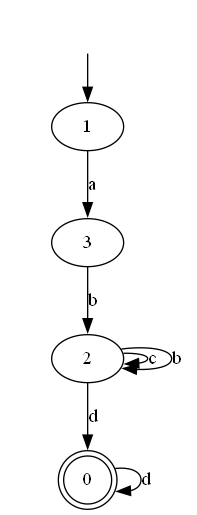The Regex to NFA, DFA, and Minimized DFA Converter is a Python program that converts regular expressions into non-deterministic finite automata (NFA), deterministic finite automata (DFA), and minimized deterministic finite automata (Min DFA). The program reads a regular expression and creates an NFA that recognizes the language defined by the regular expression. It then converts the NFA to a DFA, and finally, it minimizes the DFA to create a Min DFA that is equivalent to the original NFA.
- Alteration: The | character can be used to denote alternation between two expressions. For example: A|B.
- Concatenation: Expressions can be concatenated together to form a new expression. For example: AB.
- 1 or More: The + character can be used to indicate that the preceding expression must occur one or more times. For example: A+.
- 0 or More: The * character can be used to indicate that the preceding expression can occur zero or more times. For example: A*.
- Optional: The ? character can be used to indicate that the preceding expression is optional. For example: A?.
- ORing (aka Char/Num classes): Expressions can be ORed together using brackets and the | character to form character or number classes. For example: [ABC] or [345].
- Ranges: Ranges of characters or numbers can be defined using brackets and the - character. For example: [0-9] or [a-z].
- Brackets or Grouping: Expressions can be grouped using parentheses to control the order of operations. For example: (ABD)+.
git clone https://github.com/gaserashraf/Regex-to-NFA-DFA.git
cd Regex-to-NFA-DFA
$ pip install graphviz
run jupyter notebook
- python



